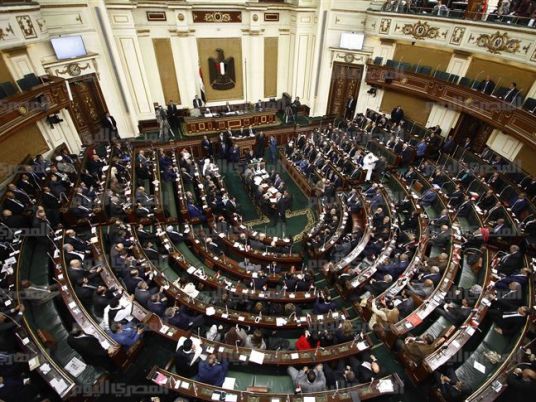On Thursday, a task force comprising 25 members of the non-governmental organization National Group for Cultural Policies, as well as four MPs from the People’s Assembly Culture, Information and Tourism Committee and four representatives of the Culture Ministry, will meet to discuss plans to restructure the state’s massive cultural apparatus.
The National Group for Cultural Policies, a loosely formed group of artists, university professors and specialists in cultural management, spearheaded by the regional NGO Culture Resource, submitted a plan they’ve been working on for two years to Parliament last week. Its vision is to restructure the Culture Ministry to make it less centralized and focus the state’s role on funding and facilitation rather than artistic production.
Dreams of a different ministry before the revolution
Restructuring the Culture Ministry has been a pressing demand for cultural workers for years. So, when former Culture Minister Farouk Hosni announced in 2009 that he’d be holding a conference to collectively develop a vision for the country’s cultural policy for the next 20 years, many groups began preparing. They hoped the conference would be a beginning of change in the ministry's policy, which was characterized under Hosni’s leadership as the “taming of intellectuals.” This meant luring in intellectuals with prizes and job offers, while disempowering and isolating them from society and distracting them from the problems of authoritarian rule and its effect on freedom of expression.
Several groups started to talk, exchanging visions on how to reform the flabby institutions of the ministry. Some even announced that they would include the views of Islamist thinkers and Muslim Brotherhood members who had previously been sidelined. The conference was repeatedly delayed, and in the meantime, the Culture Resource started an initiative of it its own, holding a conference on cultural policy in the Arab region in June 2010.
Research groups were assigned to define the problems in each country and develop recommendations, which were published in a book at the end of the same year. The recommendations for the Egyptian case became a frame of reference for many discussions on the future of cultural policy during the 18-day uprising and after Mubarak stepped down. The plan was repeatedly discussed and tweaked over the past year, and finally submitted to Parliament.
A two-stage reform plan
The main purpose of the plan is to decentralize the operations of the ministry, making it more of a facilitator rather than a producer of culture. The ministry, for instance, would manage the state’s budget, coordinating between the cabinet, Parliament and non-governmental organizations. But the change would need time to take place smoothly.
Over the next year, the group would work on purging the ministry of corruption, undertaking necessary investigations, revising internal regulations and defining roles and responsibilities clearly to increase efficiency. The focus would be on restructuring the four main sectors of the ministry: the Supreme Council of Culture, the National Archives, the Arts Academy and the Cultural Palaces Authority.
While purging state institutions has been relatively complicated thus far, a bigger challenge that faces this ambitious plan is to increase efficiency by downsizing employment by 20 to 25 percent. For instance, 8,329 employees worked for 432 cultural palaces and centers alone in 2009, according to the Central Agency for Public Mobilization and Statistics. The plan, however, proposes offering some staff early retirement programs and developing training programs for temporary workers to encourage them to start private projects.
The second phase aims at turning the four main sectors into public organizations that are administratively independent from the ministry; they would be managed by elected boards of trustees, and one-third of the board members would be changed every three years. As for the ministry’s productive sectors like the Cairo Opera House, General Egyptian Book Organization and National Center for Translation, those would be turned into joint-stock companies owned by employees, the state and investors. A major goal of the plan is to clearly define the roles of each sector to avoid existing duplication of efforts. For instance, several sectors currently publish books with minimal coordination.
As for the Supreme Council of Culture, the plan proposes turning it into a planning body that guides the country’s overall cultural policy through a democratic process. It would also monitor and evaluate the performance of the various sectors, and be responsible for reviewing related legislation and advocating freedom of creativity and expression. The council would also be responsible for granting state awards. To perform its task, the plan puts the Cultural Development Fund under its supervision. The fund would focus on fundraising and would stop releasing books and organizing concerts and festivals.
The Cultural Palaces Authority would become a national network of independent cultural associations responsible for managing their assigned projects for three to five years. Their performance and success in engaging the local community would then be evaluated by local cultural councils formed from public figures and intellectuals from each governorate.
The most radical changes will take place in the National Archives, including the National Center for Cinema, the Folk Art Center, the Fine Arts Sector and all the centers, museums and institutions that preserve cultural heritage. Material would be classified according to the medium, preserved and made accessible to the public, while maintaining intellectual property rights.
Other major changes involve dissolving the National Organization for Urban Harmony and assigning its duties to local governors, and expanding the Sector of Foreign Cultural Relations to be an international organization that supports Egyptian artists abroad.
Funding culture a constant challenge
Over the past year, the Culture Ministry has faced a budget deficit of about 20 percent, due to the separation of the Supreme Council of Antiquities — the most profitable sector in the ministry. The National Group for Cultural Policies is proposing returning the antiquities sector to the ministry.
According to the plan, the state is to allocate 1.5 percent of its annual budget to the Culture Ministry. This amount is expected to cover 60 to 80 percent of expenses. The rest of the money is to be raised by various board members from different sectors.
Perhaps the most interesting suggestion in the funding plan is organizing a national lottery for culture and education, which hopes to encourage the public to fund these two vital sectors. The Supreme Council of Culture would then redirect these funds to non-governmental organizations operating throughout the country with the Culture Development Fund.




